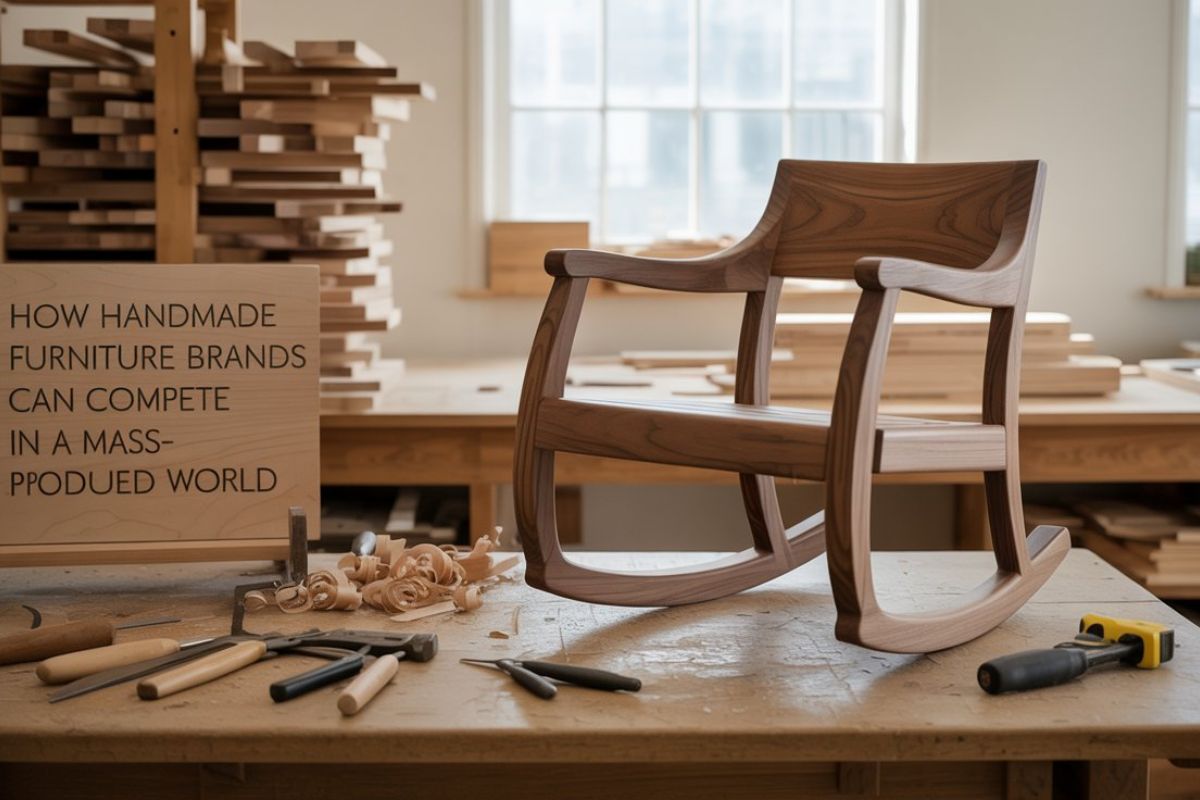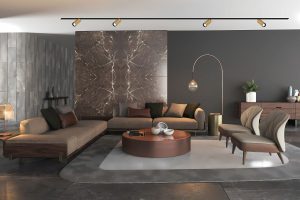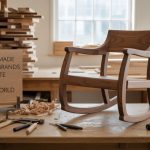With so much cheap, mass-produced furniture in the market, handmade furniture has had a tough time! Small as it is, the niche somehow still exudes an aura of craftsmanship, eco-friendliness, and sentiment. Let’s learn about how the brands can carve out a niche for themselves and cater to a clientele looking for something real, rugged, and full of legend.
Emotional Influence of the Handmade
Imagine the pleasure of unwrapping the box of a handcrafted dining table. Not as a commodity, but as a narrative: the grain of wood, the aroma of the artisan’s mark, and the workshop scent of locality. This is an authenticity driver that consumers are hungry for today. A study by Kyungil University illustrates that individuals regard furniture as conveying personality and values, rather than functionality.
That emotional layer is important. The handmade furniture brands build a deep connection by offering a connection – a narrative that you can touch. It is similar to the difference between a mass-produced greeting card and a hand-written letter. When individuals step into a boutique showroom or look through a maker’s Instagram feed, they see tools, sawdust, or a woodworker’s hand, and suddenly it becomes personal. That humanness to handmade brands is the beauty that mass production cannot reach.
A Quality That Will Tell A Story
Mass-produced furniture generally has a lightweight feeling for a reason: there’s largely particleboard, glued joint edges, and all the inexpensive finishes. Handmade pieces-which should be crafted with joinery types and solid hardwood-inherit a different tale. They age more gracefully; they not only become a family heirloom, but they also last a lifetime.
Take the American brand of Thos. Moser. Established in 1972 with century-old hardwoods, it expanded from a solo production to a reputable business with 110 workers, and it still prioritizes quality over convenience. Or take. which continues to make colonial-style seating amid presidential inaugurals or within the White House cabinet rooms. These companies are the best examples that legitimacy and a niche in history can surpass popularity.
Sustainability and Ethical Sourcing
There’s a degree of demand for sustainability, and green consumers are creating the demand. Consumers are increasingly interested in making purchases that align with their values-including supporting local economies, reducing waste, and bypassing products from the petrochemical realm. Handcrafted furniture will typically outperform and last longer than mass-produced forms in terms of performance, durability, and environmental impact, in their reviews. Not to mention, the environmental life-cycle assessments always favor handmade for life-cycle effect comparison.
Some Companies go even further-they use only sustainable Vermont wood, donate to our nonprofits to plant trees, and retell their tale of production in the showroom of a restored farmhouse built in the 1790s. That origin story isn’t mere marketing nonsense-it says something small: A purchase that matters.
Embracing Technology and Story
Yes. Handmade is all about the craft. But digital is its fuel. Reviews, AR tools, and online personalization enable handmade furniture brands to compete on the grounds of convenience and reach.
Porch Group Media documents that over 50% of 2024 furniture buying was reported to be influenced by online reviews, and 70% of customers conducted extensive online research. Companies like Maine Cottage and Western Heritage Furniture illustrate how combining an online store, social media, and storytelling is good for the bottom line.
Augmented Reality (AR) is the future, with 80% of consumers liking brands that offer AR previews, and 40% stating they would pay more; the potential has to be seized. Picture designing a walnut sideboard in your lounge room, while choosing dimensions or handles through AR. That kind of technology bridges the gap between bespoke design and high-street convenience.
Case Study: Growth without Dilution
It is difficult to scale a handcrafted production model: efficiency is intellectual dilution. Yet, some makers manage to grow smartly.
Thos. Moser demonstrates how. They incorporated computer-aided design to enhance production, but retained the hand-finishing in the workshop. Thus, they were able to claim to have six showrooms, direct connections with interior designers and B2B customers, and, in addition, uphold their narrative and quality.
Vermont Woods Studios uses the cooperative model-preserve many small workshops and runs under a single online platform. Each of them plants their flag and is able to reap advantages from shared marketing and logistics.
Strategic pricing and value communication
Handcrafted furniture is premium-priced – usually around 20-30% more than mass-produced counterparts. To avoid sticker shock, brands need to communicate their value:
- Longevity: It is not throwaway furniture and is something your grandchildren may inherit.
- Customization: Utilitarian value is imparted through bespoke sizing, finishes, and personalization.
- Locally influenced: There is a big desire to support the local economy and artisans.
- Transparency: The actual wood used in making, who made it, and how it is all openly shared.
Brands will earn consumer trust and allegiance to their brand if they position their price as not an expensive price but as an investment in the home, craftsmanship, and the earth.
Tapping into Niche Markets
With a world of mass-produced everything, niches are gold mines. Handmade or craft brands appeal to:
- High-end customers are seeking luxury, prestige, and a one-of-a-kind piece.
- Eco-Conscious consumers who want sustainable, non-toxic products.
- Designers and collectors are looking for statement or heirloom-quality furniture.
- Designers who have a very clear vision of what they want to achieve in terms of both form and function.
A good example is Space Wood of India, which in an oversaturated market has built a loyal local customer base by emphasizing craftsmanship with custom contracts. Another example is Western Heritage Furniture, which is targeting eco-design believers, selling reclaimed timber from century-old barns.
The Hybrid Strategy: Online + Local Showroom
Thousands of shoppers begin their shopping experience digitally and complete it in store. Savvy handmade furniture companies design an interactive e-commerce experience, followed by social media platforms, fascinating AR applications, and reviews, all complemented by a welcoming showroom or craftsman’s shop for personal interaction. Such a strategy combines the convenience of online shopping, yet remains authentic.
Small studios can even:
- Take virtual tours on Instagram Live.
- Meet with them in person or through video.
- Maker stalls at the market or pop-up workshops are wonderful alternatives, as well.
Observe enchanted artisan hands at play, sniff the wood, and sense the joinery–this treasured instant after months of dreaming is something no lovely catalog could possibly take its place.
Conclusion
While mass production impersonally highlights the more affordable or quicker method of creating an item, handmade furniture brands provide levels of authenticity, emotion, individuality, purposeful workplace connections, and values. They thrive by means of good storytelling, pricing, digital engagement tools, and community building. The future is promising for engaged makers who can combine tradition with innovation-who make good products. The customized furniture market, in particular, is going to experience a steep growth of more than $35 billion globally by 2025-with a robust CAGR of nearly 9%.
While building a vintage brand within the handcrafted furniture space, one remains committed to their art of woodworking; they have to welcome new technologies and sustainability. Lakecity Handicrafts embodies this balance-offering custom-order handcrafted furniture with a tale behind every piece.











